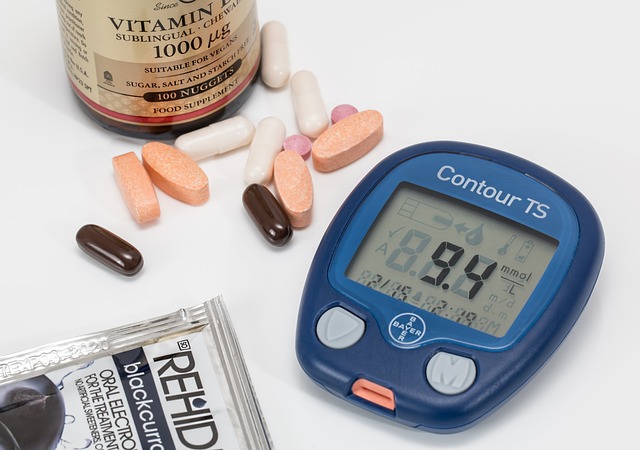In the UK, iron deficiency anemia (IDA) is diagnosed through blood tests measuring hemoglobin (Hb), ferritin, transferrin saturation (TS), and total iron binding capacity (TIBC). Cholesterol blood tests can indirectly indicate IDA by revealing associated risk factors. Low Hb levels suggest anemia, prompting further testing to identify the root cause, such as iron, vitamin B12, or folate deficiencies. Treatment options include dietary changes, supplements, injections, and addressing underlying conditions for long-term management.
In the UK, iron deficiency anaemia (IDA) is a common yet treatable condition. Understanding its impact on overall health is crucial. This article explores how blood tests play a vital role in diagnosing IDA, focusing on key indicators such as ferritin and haemoglobin levels. We’ll guide you through interpreting results and available treatment options, empowering you to take control of your health with the help of a simple UK cholesterol blood test.
- Understanding Iron Deficiency Anemia and Its Impact
- The Role of Blood Tests in Diagnosing Iron Deficiency Anemia
- Interpreting Results and Available Treatment Options
Understanding Iron Deficiency Anemia and Its Impact
Iron deficiency anemia is a common blood disorder that occurs when your body doesn’t have enough healthy red blood cells to carry adequate oxygen to your tissues and organs. This condition is primarily caused by low iron levels, which play a crucial role in producing hemoglobin—the protein in red blood cells responsible for transporting oxygen. Symptoms can range from mild to severe and may include fatigue, weakness, pale skin, shortness of breath, dizziness, and headaches. Left untreated, it can lead to more serious health issues.
In the UK, cholesterol blood tests are often used as a screening tool for various conditions, including anemia. While not directly testing for iron deficiency, these assessments can provide valuable insights into overall health and help identify potential risk factors associated with anemia. For example, elevated liver enzymes or abnormal lipid profiles could suggest underlying conditions that contribute to iron deficiency anemia. Understanding the impact of this condition is essential, as it may affect individuals of all ages, from young women with heavy menstrual cycles to older adults with poor dietary intake.
The Role of Blood Tests in Diagnosing Iron Deficiency Anemia
Blood tests play a crucial role in diagnosing Iron Deficiency Anemia (IDA) in the UK. These tests are essential tools for healthcare professionals to assess and confirm the presence of this common nutritional deficiency. By analysing a sample of your blood, laboratories can measure the levels of various components that indicate anaemia, including haemoglobin (Hb) and ferritin. Haemoglobin is a protein in red blood cells that carries oxygen, while ferritin stores iron in the body. Low levels of these substances are strong indicators of IDA.
In addition to Hb and ferritin, other tests may be conducted as part of a comprehensive assessment. These can include checking for transferrin saturation (TS), which measures how much iron is bound to a protein called transferrin in your blood, and total iron binding capacity (TIBC), which reflects the overall capacity of your body to transport iron. Together, these blood tests provide a detailed picture of your iron status, helping doctors to accurately diagnose IDA and guide appropriate treatment.
Interpreting Results and Available Treatment Options
After completing an iron deficiency anemia testing with blood tests, interpreting the results is crucial for accurate diagnosis and appropriate treatment. The most common UK Cholesterol Blood Test measures hemoglobin (Hb) levels. A low Hb level can indicate anemia. If this is the case, further tests may be required to pinpoint the specific cause, including iron levels, vitamin B12, and folate assessments.
Treatment options for iron deficiency anemia range from lifestyle changes to medical interventions. Increasing dietary intake of iron-rich foods like leafy greens and red meat can help. For severe cases, healthcare professionals might prescribe iron supplements or injections. In some instances, addressing underlying conditions such as gastrointestinal disorders or heavy menstrual bleeding is essential for long-term management.
In the UK, iron deficiency anaemia is a common condition that can significantly impact overall health. Blood tests play a crucial role in diagnosing this deficiency, providing essential insights for effective treatment. By understanding the interpretation of results, individuals and healthcare professionals can navigate available options to manage symptoms and promote well-being. A simple UK cholesterol blood test can reveal vital information about iron levels, serving as a powerful tool to combat anaemia and its associated effects.
